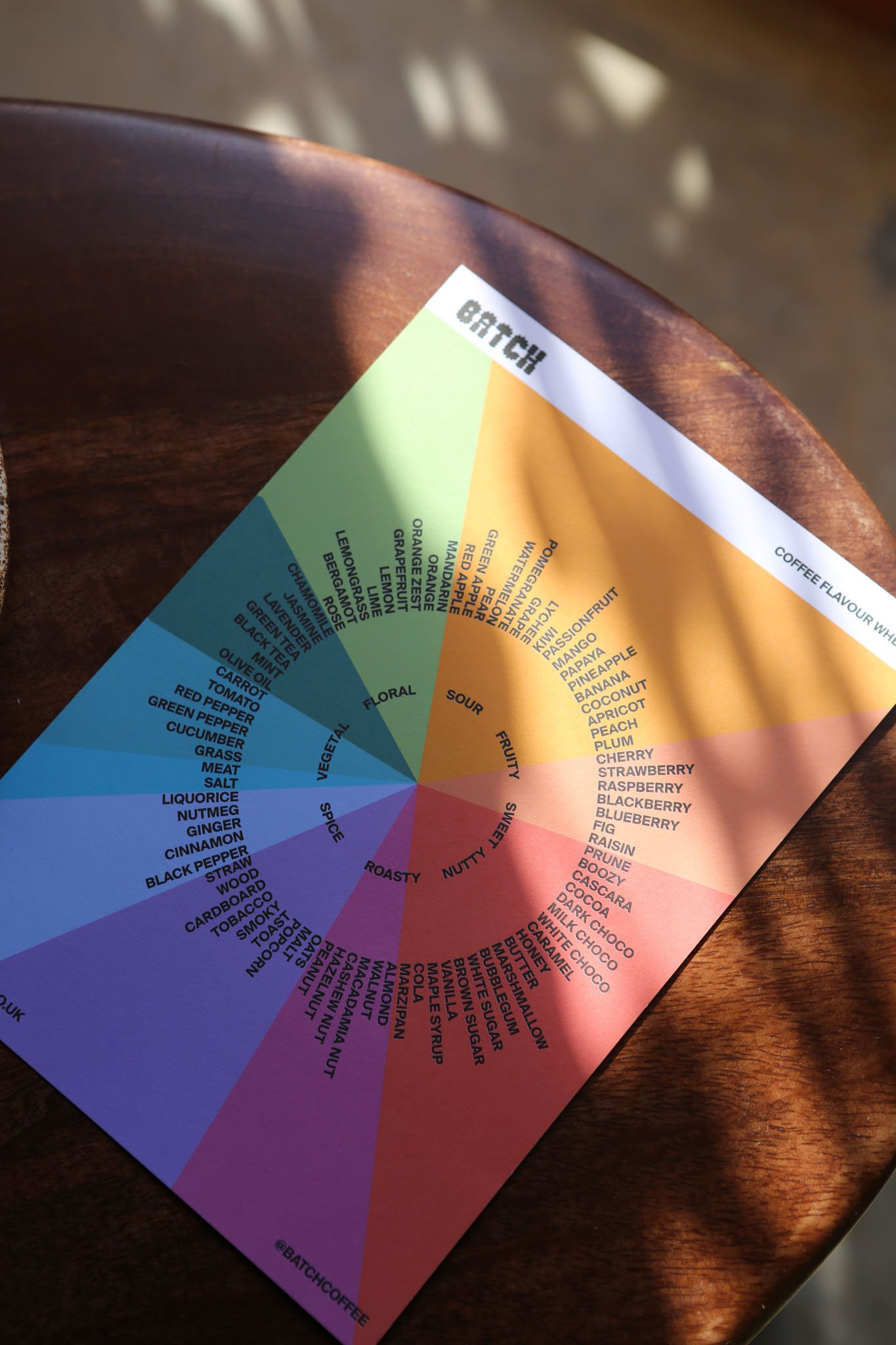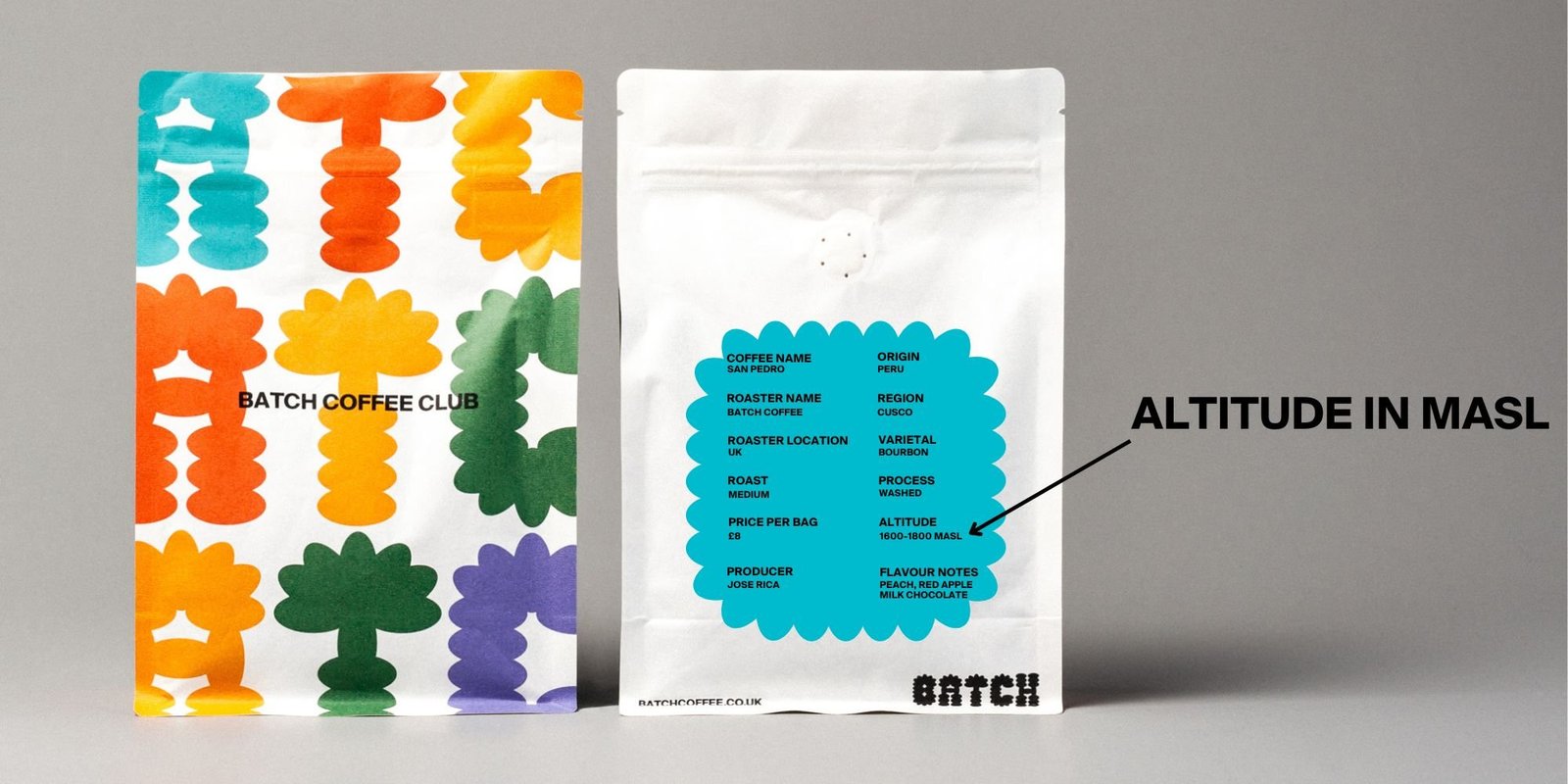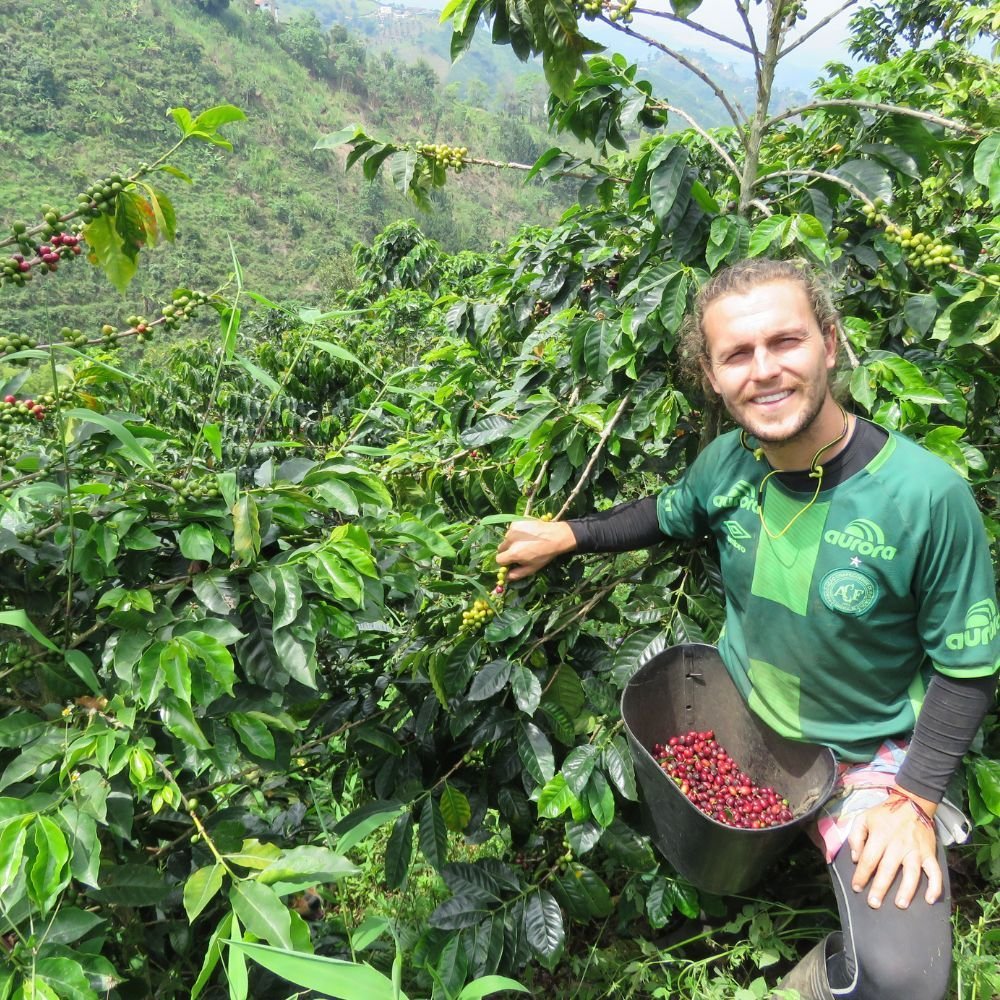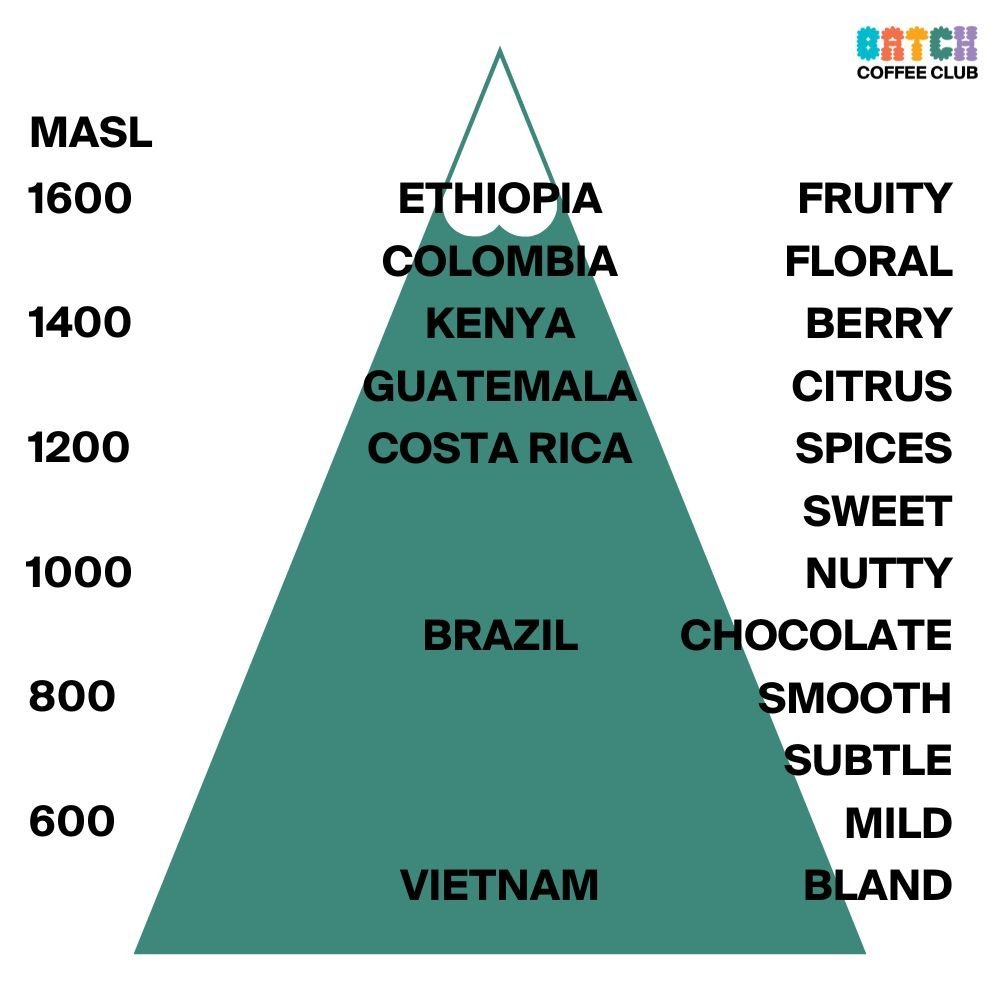It may seem like a pretty trivial fact at first but the altitude at which coffee beans grow can have a huge impact on the final flavour profile of the coffee.
Generally speaking the higher the farm the higher the quality, however there are some facts to cover first before you start looking for high altitude coffee.
Skip To:
.
So let’s take a look at how altitude affects coffee beans.
Why Trust Me?
I’m Tom and I have been working in the coffee industry for over 10 years, starting my journey as a barista in Australia, working on coffee farms in South America and roasting coffee in The UK.
Today I review and write about speciality coffee. I am the founder of Batch Coffee Club, which showcases the very best coffee from around the world.
Related Content
What does altitude mean in coffee?
When you purchase a bag of speciality coffee you’ll see various details on the label such as roast date or processing method.
You may also see the altitude of the coffee which is usually represented as a number in MASL (metres above sea level).
The altitude of the coffee is the altitude of the coffee farm from which the coffee beans grew.
You will usually see a range in altitude, this may be because the particular farm spreads over higher and lower altitudes or the coffee comes from many different farms (you may see this when the coffee has been produced by a coop, washing station or ‘small holders’).
How does altitude affect coffee bean growth?
As stated above, altitude plays a huge role in the taste of coffee beans, this is largely due to the growth of the coffee cherry.
Coffee is usually harvested once a year (sometimes twice and sometimes almost 3 times) like with other fruits there is a cycle, firstly the plant flowers and then a small fruit appears which gradually ripens ready to harvest.
Coffee plants that grow at high altitudes are subjected to cooler temperatures with less oxygen, this implicates a slower growth cycle of the coffee cherry which stretches out the maturation of the coffee seeds (or coffee beans as we know them).
What are the taste and flavour changes at different altitudes?
Coffee beans that grow at higher altitudes have longer to grow and mature, this extended coffee bean development leads to more complex sugars which creates complex flavour profiles in the end cup.
There are only a handful of countries that have the geography to produce (in mass) high altitude coffee; these include Colombia, Ethiopia, Kenya, Rwanda and Guatemala.
High altitude coffees usually have complex flavour profiles that can have many different tasting notes, some of these may include florals and fruity flavours, specifically berries.
As you then drop altitude the complexities start to diminish and although there are some high quality coffees at medium altitudes the flavour profiles typically become more subtle and the coffee is generally smoother with mild tasting notes.
What is the link between altitude and quality of coffee beans?
The higher the altitude the higher the quality of the coffee in general. There are many exceptions to this as there are many factors that come into play when you look at coffee quality like the varietal, the processing method and the roast profile.
However, coffee that originated at high altitudes is harder to grow and yields less which lends itself to farming practices that also produce high quality coffee.
What’s the best brew method for different altitudes?
For me, if I am brewing any coffee that I believe is high quality coffee the coffee roaster would have usually roasted towards the lighter end of the spectrum as to highlight the natural flavours of the coffee beans rather than overpower the subtleties with roasty notes.
In this case I would aim to brew the coffee beans as a filter coffee through a paper filter. This includes pour over method, an Aeropress or even a coffee filter machine.
Out of all of the brew methods, filtering the coffee through paper produces the cleanest and brightest cup which enables you to taste and appreciate all of the delicate flavour profiles that high quality coffee may have.
As with any high quality coffee, keep your high altitude coffee beans in an airtight container and only grind what you need for brew to keep the coffee lasting as long as possible.
Final Thoughts.
So high altitude coffee usually means high quality coffee but as discussed there are also many other factors that play a role in quality. You may also prefer coffee that has big bold flavours and find the complex stuff a little bit too much for your morning brew. But if you get a kick out of tasting blueberry in your Ethiopian pour over then you’ll appreciate the slow development of those high altitude coffee cherries.
FAQs
Can Altitude Influence Coffee Acidity?
Yes, altitude plays a direct role in the amount of acidity in a coffee bean and coffee that is grown at high altitudes tends to have higher levels of acidity which creates fruity flavour profiles, particularly berries.
What Altitude is Best for Coffee Growing?
Well, there are 2 ways to answer this question. Firstly it is easier to grow coffee at a lower altitude, Robusta coffee thrives at lower altitudes in countries like Vietnam which export the second highest amount of coffee in the world.
However, the lower the altitude the less complex the coffee profile is and the lower the quality. The majority of Arabica coffee is grown between 500 to 2000 metres above sea level.
How Do I Know the Altitude of My Coffee Beans?
If you are purchasing specialty coffee the bag should say a range of altitudes of which the coffee is grown, much like the example above.
What Regions are Known for High-Altitude Coffee?
There are a few regions famed for high quality coffee in the world and it is no coincidence that these countries also grow coffee at high altitudes. These countries include Ethiopia, Colombia, Guatemala, Kenya, Rwanda and Papua New Guinea.
How Does Altitude Affect Coffee Bean Size?
The coffee beans that are harvested at higher altitudes are often referred to as hard beans, this is because the growth of coffee cherries is restricted by the conditions to the seeds tend to be dense and smaller than regular coffee beans.
Can Altitude Affect the Caffeine Content in Coffee?
Caffeine content in coffee beans decreases as the altitude increases. This may be because of the harder conditions that the coffee plants are under to produce fruits at higher altitudes.
Sources: Hindawi










